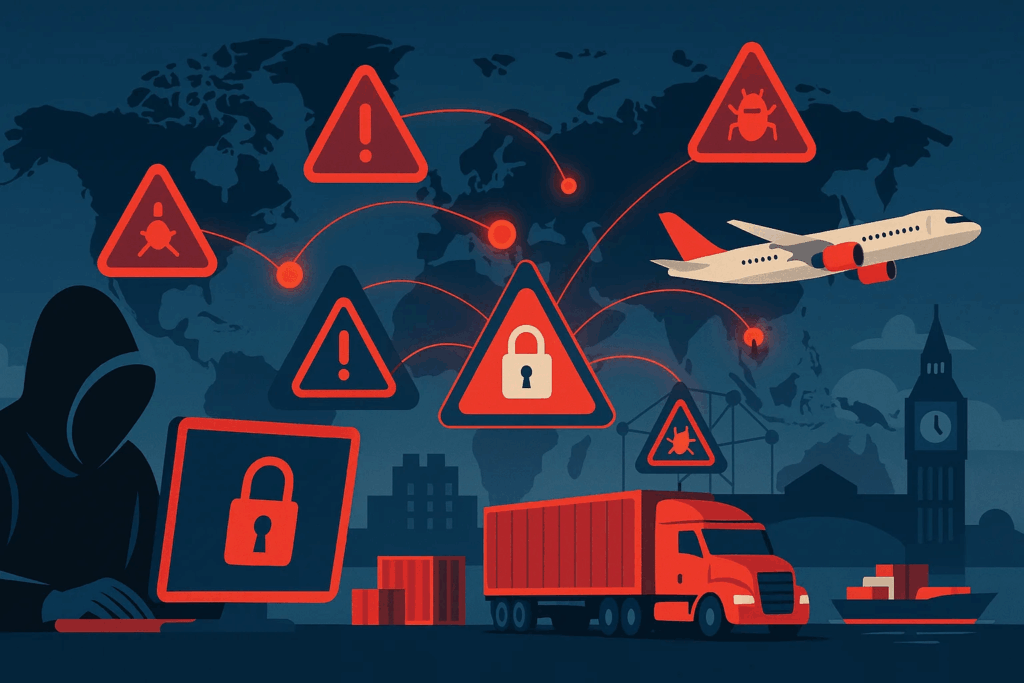Why Verifying the Legitimacy of a Global Logistics Track Platform Matters for DTC Brands
Verifying the legitimacy of a global logistics track platform matters for DTC (direct-to-consumer) brands because trust, speed, and visibility are now non-negotiable in online commerce. Customers demand to see where their package is, when it will arrive, and how potential delays are managed. For a growing brand, relying on a platform without checking its reliability can quickly lead to customer complaints, financial loss, and reputational damage. That is why ensuring authenticity and credibility is not a small task—it is a key business strategy.

1. The Role of Logistics Tracking in DTC Growth
1.1 Direct-to-Consumer Success Depends on Visibility
DTC brands operate without intermediaries, so logistics visibility becomes even more critical. Unlike traditional wholesale channels, the brand itself is responsible for delivering the final customer experience. Tracking updates acts as reassurance. If customers cannot see progress, they lose confidence in the brand, not the carrier.
1.2 Building Customer Trust Through Transparency
Modern buyers want more than fast shipping. They want constant updates. Brands that offer clear, real-time parcel tracking increase transparency, which leads to repeat purchases. Updates may be delayed, incomplete, or even false without a legitimate tracking platform, resulting in broken trust.
1.3 Reducing WISMO Inquiries
“Where is my order?” (WISMO) is the most common customer service question in e-commerce. A reliable global logistics track platform reduces these inquiries by giving customers information before asking. Verifying that the platform is real and secure ensures these updates are accurate.
2. The Risks of Using an Unverified Platform

2.1 Financial Loss
An unreliable tracking system can cause lost shipments, duplicated orders, or delays that translate into refunds and replacements. These losses cut into thin margins for small and medium DTC brands.
2.2 Damage to Brand Reputation
Customers do not blame the carrier or platform—they blame the brand. One poor delivery experience shared online can discourage hundreds of potential buyers. A fraudulent or weak logistics platform magnifies this risk.
2.3 Security Concerns
Data is the lifeline of modern retail. A fake or unverified platform could expose customer addresses, payment details, and sensitive supply chain information. Cybersecurity threats are no longer rare—they are common.
2.4 Poor Carrier Coverage
Some platforms claim to connect with “all global carriers” but actually cover only a few. This creates gaps in tracking, especially for cross-border shipments. Verifying legitimacy ensures that the platform really has the carrier integrations it advertises.
3. Key Elements of a Legitimate Global Logistics Track Platform
3.1 Transparent Carrier Integrations
A trustworthy platform openly lists which carriers it integrates with and how frequently tracking information is updated. Look for platforms that support international couriers, local postal services, and last-mile delivery providers.
3.2 Real-Time Updates

Lagging updates frustrate customers. A legitimate platform should provide near real-time visibility. If updates appear hours or days late, it signals weak technology or fake integration.
3.3 Multi-Language and Multi-Currency Support
Since DTC brands sell globally, a proper logistics platform should handle multiple languages and currencies. This creates a seamless customer experience across different markets.
3.4 Strong Data Security Standards
Check whether the platform follows global data protection regulations like GDPR or CCPA. A legitimate provider will highlight encryption practices, secure APIs, and compliance certificates.
3.5 Customer Support Availability
No matter how advanced the technology is, customer support matters. A verified platform offers direct communication channels, quick response times, and escalation paths for urgent issues.
4. How to Verify the Legitimacy of a Tracking Platform
4.1 Check Business Registration and Compliance
Legitimate providers have proper business licenses, corporate registration numbers, and compliance certifications. These details should be publicly available on their website or upon request.
4.2 Research Online Reputation

Look for independent reviews, case studies, and mentions in trusted industry forums. If there are no credible references, treat it as a red flag.
4.3 Test with Pilot Shipments
Before committing, run a pilot test with a few shipments. Verify how accurate the tracking updates are, whether the estimated delivery times are correct, and how customers respond to the experience.
4.4 Validate Carrier Partnerships
Some platforms use logos of major carriers without actual partnerships. Contact carriers directly to confirm integration claims.
4.5 Evaluate Technical Reliability
Ask about uptime rates, API documentation, and update frequency. A strong platform should have 99% or higher uptime and documented integration guides.
5. The Impact on DTC Brand Performance
5.1 Higher Customer Satisfaction
When customers can track their orders smoothly, they are less anxious and more likely to purchase again. Satisfaction rates increase when brands use legitimate platforms that reduce uncertainty.
5.2 Lower Support Costs
A trustworthy system cuts down WISMO inquiries by automating updates. Fewer support tickets mean cost savings for the brand.
5.3 Stronger International Expansion
Global DTC brands face complex cross-border logistics. Verified tracking ensures smoother operations, fewer lost packages, and a consistent brand image across countries.
5.4 Competitive Advantage
Many brands still treat tracking as an afterthought. By investing in a legitimate global logistics track platform, a brand differentiates itself with a superior post-purchase experience.
6. Case Scenarios That Highlight the Difference

6.1 Brand A: Using a Weak Platform
A small fashion DTC brand used an unverified platform that promised “global coverage.” Orders shipped to Europe often showed “pending” for days. Customers flooded support channels, refunds increased, and negative reviews hurt the brand.
6.2 Brand B: Verifying First
Another DTC brand selling electronics verified its tracking provider before integration. They checked compliance documents, tested pilot shipments, and validated carrier coverage. Result: accurate updates, fewer WISMO inquiries, and a 20% increase in repeat orders.
7. Red Flags to Watch Out For
- No clear company address or registration information
- No SSL certificate or poor website security
- Overly generic promises like “track anything, anywhere, anytime” without proof
- Delayed or inconsistent updates across carriers
- Lack of customer service or slow responses
8. Steps for DTC Brands to Implement Secure Logistics Tracking

8.1 Define Core Needs
Decide whether you need basic order visibility, predictive delivery times, or advanced analytics. Not every platform offers the same depth.
8.2 Shortlist Platforms with Credibility
Only consider providers that show clear business legitimacy and positive industry reviews.
8.3 Run Technical Integrations in Stages
Instead of rolling out all at once, integrate the platform step by step. This allows issues to be spotted early.
8.4 Train Customer Support Teams
Support agents should know how to use the tracking dashboard and guide customers efficiently.
8.5 Monitor and Re-Evaluate
Even after verifying, continue monitoring performance. Check update accuracy, system uptime, and customer feedback to ensure the platform’s reliability.
9. Why Verification Cannot Be Ignored
Verifying the legitimacy of a global logistics track platform is not just a checklist—it is a growth strategy. A verified platform protects customer trust, secures data, and controls operational costs. For DTC brands competing in a crowded market, ignoring verification is the fastest way to lose customer loyalty.
Conclusion
For DTC brands, logistics is more than moving boxes. It is about delivering promises. A legitimate global logistics track platform ensures that every package reinforces brand trust instead of damaging it. By verifying authenticity, testing performance, and choosing partners with proven credibility, brands can transform shipping from a weak point into a competitive edge. In a marketplace where trust drives repeat sales, verification is not optional—it is essential.
Industry Insights
news via inbox
Nulla turp dis cursus. Integer liberos euismod pretium faucibua








